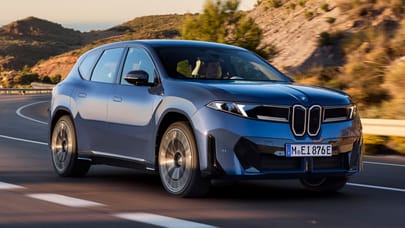

Some time in the late Seventies, Audi engineer Roland Gumpert drove an off-roader built for the German army. It was while driving the contraption that Gumpert - who now makes his own, spectacularly ugly cars - had a brainwave.
Why shouldn't Audi road cars have the grip of a military 4x4? At the time it was a fairly radical idea. But his bosses liked it, and it wasn't long before the quattro was born. All they needed was a way to show the public that it worked...
Pictures: Ripley & Ripley
This feature first appeared in Top Gear magazine
Advertisement - Page continues below
Around the same time, Group B regulations were being rolled out in the World Rally Championship. This gave manufacturers permission to be as mad as they liked, so long as their creations were based on a road car of which 200 or more were made. Audi had already rallied the quattro, so by the time Group B came along, it had a head start. In the arms race that followed, the company blew everyone away with its stash of four-wheel drive and monster turbos.
Audi won the constructor's championship in 1982, followed by the driver's titles in '83 and '84. Never again would a RWD car win the WRC. Group B regulations spawned some terrifying machines, from the Metro 6R4 to the Lancia Delta S4, and there wasn't a road in the world they couldn't handle. From Welsh forests to Kenyan plains, these things bossed the planet's B-roads. At the time, it was arguably more popular than F1, and the drivers were superstars. Suddenly, the world could pronounce even the stickiest names, three of which played for Team Audi: Hannu Mikkola, Stig Blomqvist and Walter Röhrl.

The car we have here is Röhrl's actual S1 E2 from 1985, an evolution of the original quattro, with a shorter wheelbase and more power. But by the time it came along, Audi's rivals had begun to catch up. Peugeot, under the leadership of Jean Todt, had put the engine in the middle of its 205 T16, which won the world title in 1985. In the same season, the S1 managed just one victory. But while it wasn't the most successful quattro, it was the wildest. Perhaps the wildest of all the Group B cars.
For starters, it made around 500bhp from its five-cylinder engine, thanks mostly to a turbo the size of a bucket. A new anti-lag system meant it went everywhere with a psychotic chatter. It used carbon Kevlar panels to save weight. The wheelarches were topped by something resembling plastic guttering, and it had massive wings to shovel the air around.
Advertisement - Page continues below
It was brutal, ugly and utterly furious. And trapped deep inside was an evil squirrel, which did a good impression of a turbocharger's wastegate. If you've ever ridden in a Group B car, you'll know it's hot, scary and unpleasant. Especially when the roads were lined by humans that parted like a shoal of fish as cars sped through. Some stood so near they were grazed by wings and mirrors. At Sanremo in 1985, one chap got so close, he was clipped by Röhrl's S1 and broke his leg. Far from being miffed, the fan was rather pleased to have been injured by his hero, and Röhrl went on to win.
Alas, the S1 E2 was to be Audi's final Group B car, as the class was outlawed in 1986 after too many lethal accidents. But despite its short life, it's been mourned ever since. Maybe because it died so young. Maybe because we've seen nothing else like it. One thing's certain: rallying hasn't been the same since. After the ban, Group B cars mostly disappeared, although some popped up here and there - from Pikes Peak in Colorado to exhibition events elsewhere. Others sprang up in the muddy world of rallycross.

And that, as it happens, is where we find ourselves now. Group B might be long gone, but its ghost lives on. Take the Peugeot 208 T16 - the closest thing the world has to a modern Group B car. Created for last year's Pikes Peak hill climb, where it tore a 92-second strip off the course record in the hands of Séb Loeb, it's about to launch an attack on the World Rallycross Championship, now revived and approved by the FIA.
That means, in theory, we'll have an 875bhp, 875kg car competing in a series without stuffy rules. It's Group B for the 21st century. Just ask current world rallyist Kris Meeke, who drove the T16 for us last year. "You could say this is a state-of-the-art Group B car," he says. "To have the Holy Grail of a one-to-one power-to-weight ratio, in a car of this spec, is pretty special. It blows your mind. I couldn't breathe in certain corners because of the g forces..."

Sound Group B-ish enough for you? Imagine a load of them, racing not just against the clock, but against each other. That's what we'll have if the rallycross season is up to scratch. Could it become the new Group B? It's certainly drawing some big names: Jacques Villeneuve, Ken Block, David Coulthard and TopGear USA's own Tanner Foust will all compete at some point during the season.
And while TopGear doesn't really do rules - they aren't very Group B, after all - we would suggest just one. To be eligible to race, each car should be fully homologated with some spin-off road cars. If it worked for the quattro, it works for us.
Trending this week
- Car Review
BMW 1 Series
- Top Gear's Top 9
Nine dreadful bits of 'homeware' made by carmakers







